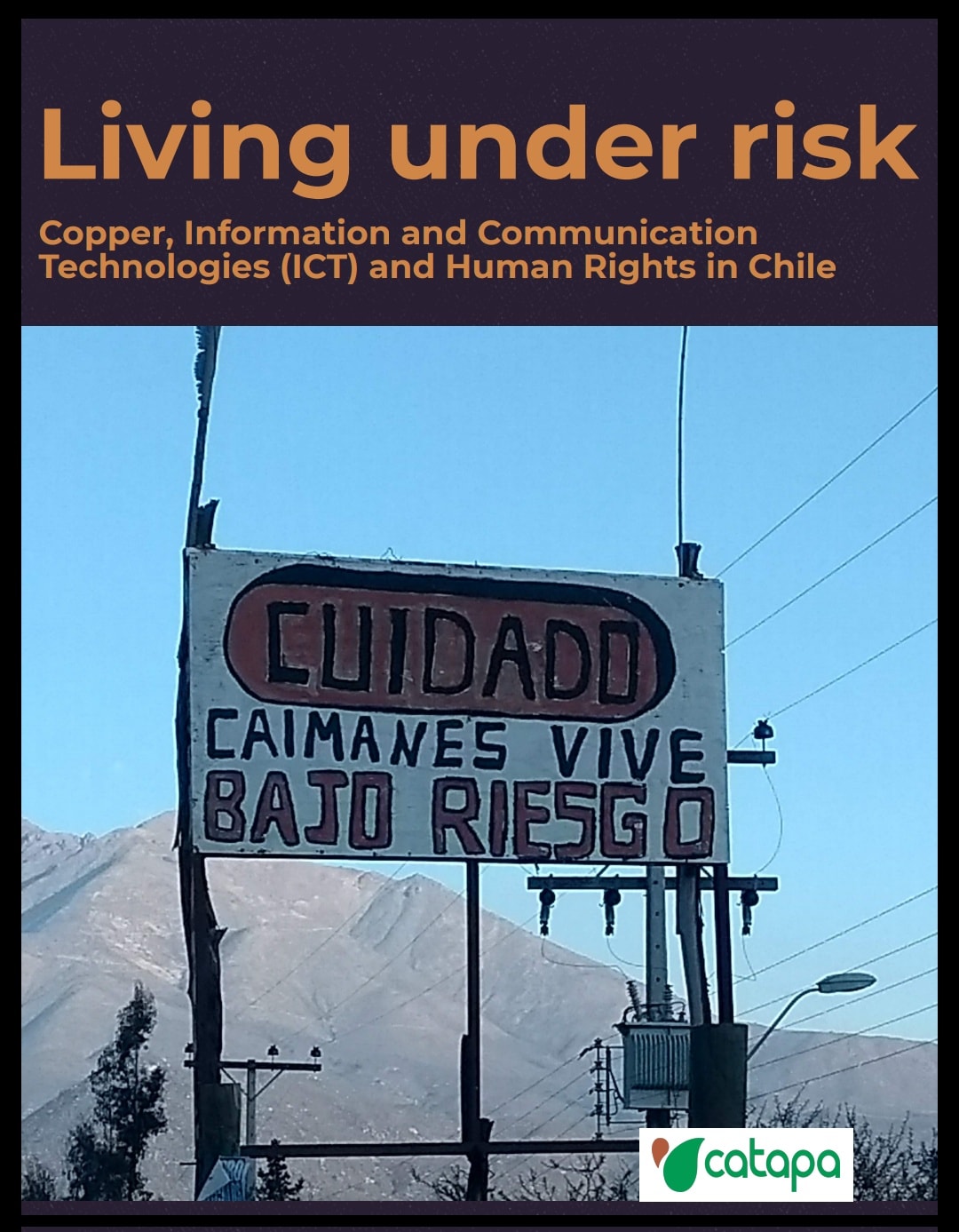Living under risk – Copper, ICT and Human Rights in Chile
Living under risk
Copper, Information and Communication Technologies (ICT) and Human Rights in Chile
Catapa published this report together with War on Want. You can read it here.
CHILE, COPPER & ICT
Chile is currently the largest copper producer in the world, holding 29% of the world reserves of the red metal. Copper represents a crucial portion of the Chilean economy and the copper industry -as will be shown in this report- is highly influential in national politics.
But the extent and intensity of copper extraction across Chile’s territory has precipitated negative impacts in the environment and on communities that resist extractivism.
Through the analysis of a case study, this report unveils the adverse socio-environmental impacts of copper extraction and discusses the role of the company, the national government and international actors in addressing the consequences brought by the copper mining industry.
Within this last group, this report highlights the role that ICTs –which represent 24% of the usage of copper (Comisión Chilena del Cobre, 2016a) – could play in the improvement of social, environmental and labour conditions at the local level.
The case study
Caimanes is a small agrarian town situated in northern Chile that has been at the centre of opposition to the Los Pelambres (hereinafter MLP or the Company) mining project, the fifth largest copper mine in the world. The community does not have political relations with national or local elites, and therefore, as will be seen, its opportunities for mobilisation have been mostly limited.
Yet, the local community reacted against the construction of El Mauro tailings dam –the largest in Latin America- identifying various negative socio-environmental impacts on issues of water, health and security. As will be detailed in this report, the capacity of the community to mobilise resources has varied across the 20 years of struggle. Through its history of resistance, the community has gone through different phases of mobilisation: from a period of direct action to a process of formalising its demands in a judicial lawsuit, which has marked the last 10 years of mobilisation.
This case also reveals a process of countermobilisation to the protest. Given the significant scale of the project, and its high
levels of associated investment, the mining project has been assiduously defended by the state and the Company, restricting the possibilities for social contention. As will be seen throughout the report, both the Company and the state have deployed direct techniques of repression such as forced displacement, the criminalisation of local leaders, and use of police forces to suppress protests. Additionally, the corporate-state nexus, has also used more sophisticated forms of counter-mobilisation such as using company-community interactions to divide the inhabitants of Caimanes, and diminishing their capacity to decide in formal spaces of community engagement.
By analysing the mechanisms that explain the rise of the Caimanes mobilisation and its main shifts, this report explores the
emergence of micro-dynamics of contention in territories that lack political opportunities and resources. Its insights allow us to understand episodes of protest in an unfavourable context for social contention; and how, despite this restrictive context, the community has been able to create opportunities, resources and solidarities at different stages of the conflict.
The report begins with a contextualisation of the political economy of copper in Chile, highlighting how it relates to consumption at a global scale, with a specific emphasis placed on the consumption of ICTs. It then generates a process-tracing analysis of the episodes of contention marked by two significant stages of protest: (i) a period during which the community aimed to, and were successful in receiving compensation from the company and (ii) a period during which the community sought to legally demonstrate the negative impacts of the project. This part of the report includes a discussion about the interlinked relationship of the community with a growing labour movement that has not yet been able to coordinate their demands with the socioenvironmental movement. The concluding section summarises these two periods of
protest highlighting the most important elements that have generated conflict in the last 20 years. It also shows how the global consumption of copper (especially from ICTs), the closed political opportunities at the national level, the process of countermobilisation by the Company and lack of networks have ended up dividing and isolating the community, diminishing its capacity to self-organise.




